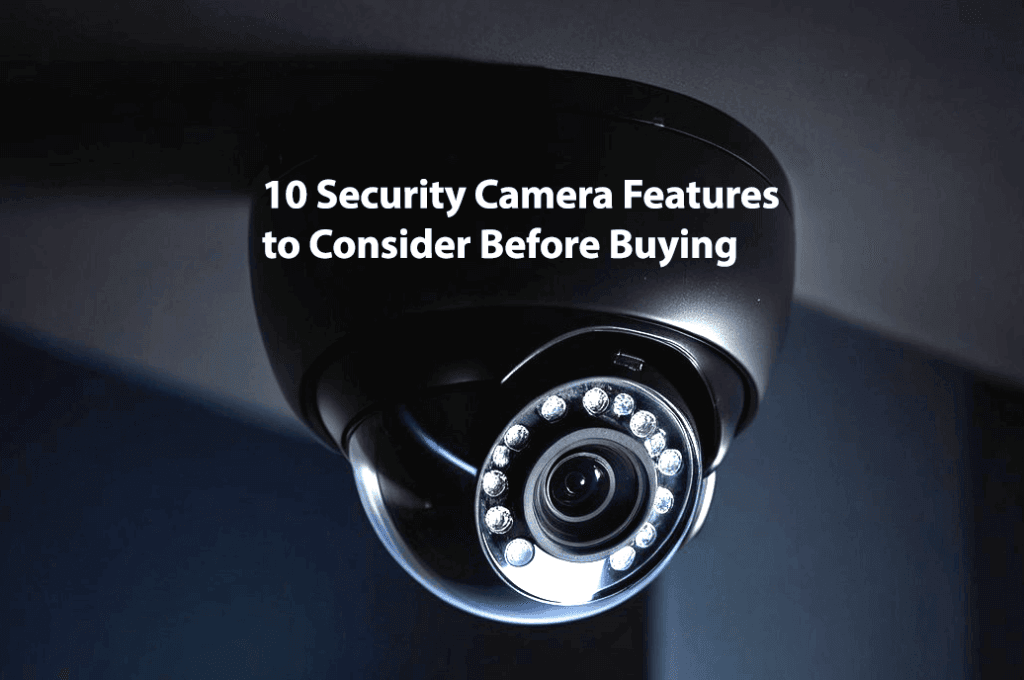
When planning a security camera project, whether for a bustling business environment or the sanctuary of your home, choosing the right security camera features can make all the difference! With the rapid advancement of technology, modern security cameras offer a range of functionalities designed to enhance safety, convenience, and peace of mind. However, with so many options available, it can be challenging to determine which features are essential for your specific needs.
In this article, we’ll guide you through the top 10 security camera features to consider. From advanced video quality and smart integrations to weather resistance and storage options, these features will help you design a system that is both effective and tailored to your security goals. Whether you’re protecting assets, loved ones, or sensitive areas, the right security camera setup can provide confidence and control in an unpredictable world.
1. Resolution
Resolution is one of the most critical security camera features to consider when choosing a camera. It determines the clarity and detail of the footage, which can make all the difference in identifying faces, license plates, or other crucial details during an incident. Cameras with higher resolutions, such as 4K or 1080p, offer sharper images, allowing for better recognition even at a distance.
For businesses, high-resolution footage can aid in monitoring activities in large spaces like warehouses or retail stores, ensuring every detail is captured. For homeowners, it provides the confidence that even subtle movements or features won’t go unnoticed. However, while high resolution enhances clarity, it also requires more storage and bandwidth, making it essential to balance your needs with your system’s capacity.
For general home use, a resolution of 1080p (Full HD) is often sufficient. However, if you need to monitor large areas or require high-definition footage for legal purposes, consider upgrading to 4K cameras.
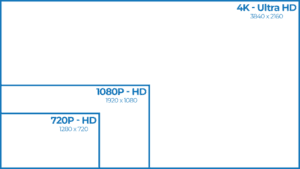
2. Field of View (FOV)
The camera’s field of view determines how much area the camera can cover. This security camera feature is crucial because it directly impacts the coverage of your surveillance system and the number of cameras needed to monitor a given space effectively.
A wider field of view reduces the number of cameras needed to monitor a given area, making it an important consideration for larger spaces like parking lots, warehouses, or expansive backyards. Conversely, for areas where you want to focus on a specific point, like a doorway, cash register, or other high-priority zone, a camera with a narrower FOV may provide better detail.
Selecting the right field of view ensures there are no blind spots, reducing the risk of missed incidents. It also helps optimize your security setup, balancing comprehensive coverage with targeted monitoring. Whether for business or home use, choosing cameras with an appropriate field of view is key to achieving efficient and effective surveillance.
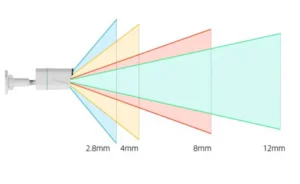
3. Night Vision
Night vision is a vital feature in a security camera, ensuring continuous monitoring and recording even in low-light or no-light conditions. Since many security threats occur after dark, having a camera equipped with night vision enhances the effectiveness of your surveillance system by providing visibility when it’s most needed. This capability is crucial for both businesses and homes to deter crimes like vandalism, theft, or unauthorized access.
Types of Night Vision Available
- Infrared (IR) Night Vision
Infrared night vision uses IR LEDs to illuminate the scene, which is invisible to the naked eye. This is the most common type of night vision and provides clear black-and-white footage in complete darkness. IR cameras are ideal for outdoor and indoor use, offering detailed images without external lighting. - Color Night Vision
Color night vision cameras use advanced image sensors and low-light technology to capture color images in dimly lit environments. These cameras often work best with some ambient light, such as streetlights or porch lights, and are valuable for capturing detailed information like clothing colors or vehicle details. - Thermal Imaging
Thermal cameras detect heat signatures instead of visible light. These cameras are useful for detecting people or animals in complete darkness or through obstructions like smoke, fog, or light foliage. While they don’t provide detailed images, they’re excellent for perimeter security or specialized applications. - Starlight Night Vision
Starlight technology uses highly sensitive sensors to amplify ambient light, such as moonlight or starlight, to produce clear and detailed images in near-dark conditions. These cameras can deliver full-color images in low-light settings and are a step up from traditional IR night vision in clarity and performance.
Choosing the right type of night vision depends on your specific needs, such as the level of detail required, environmental conditions, and the location of your camera. A well-chosen night vision system ensures uninterrupted surveillance and enhances your overall security strategy.
4. Motion Detection
Motion detection is now a common security camera feature, and it helps optimize storage and bandwidth by only recording when movement is detected. Most modern cameras allow you to customize motion detection settings, such as sensitivity levels, to avoid false alarms triggered by pets or weather conditions. Some cameras also feature motion zones, letting you define specific areas within the frame to monitor, reducing unnecessary alerts from less important areas.
Some motion-detecting cameras include features like automatic lighting, audible warnings when movement is detected, or sending notifications to your phone. These can serve as an effective deterrent to trespassers or intruders.
This security camera feature is crucial for both businesses and homes as it enhances surveillance efficiency, reduces storage requirements, and provides timely alerts for potential security threats.
5. Two-Way Audio
Cameras with two-way audio provide more interactive security options. You can listen to what’s happening on the other side of the camera and speak through it using a built-in microphone and speaker. This feature is particularly useful for communicating with delivery personnel, scaring off potential intruders, or checking in on children or pets when you’re not home. For homeowners, this feature can be used to provide instructions or deter trespassers. In a business setting, it enables remote communication with employees, customers, or unauthorized individuals in restricted areas.
Two-way audio pairs well with other smart home or business devices. For instance, you can issue commands or warnings while simultaneously activating other security measures like alarms or locking doors. The audio recordings from two-way systems can also serve as additional evidence in case of disputes or security breaches, complementing video footage for a more comprehensive record. This is becoming a more common security camera feature, but is typically seen more on security cameras targeted for home users.
6. Cloud Storage vs. Local Storage
Security cameras store footage in either the cloud or on local storage devices, such as microSD cards or hard drives. Each option has its advantages:
Cloud Storage: Offers easy access to footage from anywhere and is generally safer from theft or damage. However, most cloud storage plans come with a subscription cost, and you’ll need to ensure you have enough bandwidth for continuous uploading.
Local Storage: Provides more control over your footage and may come with no ongoing costs, but it’s vulnerable to theft or damage if someone takes or destroys the physical storage device.
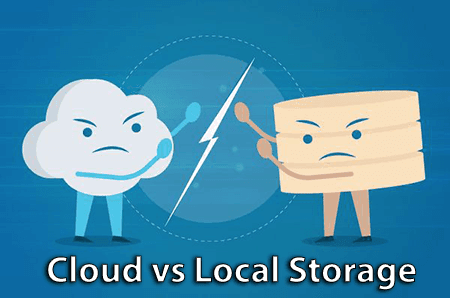
7. Weather Resistance
For outdoor cameras, weather resistance is crucial to ensure reliable operation in different climates. Cameras with an IP (Ingress Protection) rating of IP65 or higher are designed to withstand dust, rain, and extreme temperatures. Additionally, verify the camera’s operating temperature range to ensure it can function in your region, especially if you live in areas with extreme heat or cold.
For any security system, especially outdoor setups, weather resistance is a non-negotiable feature. It guarantees reliability, performance, and durability, ensuring that your surveillance system functions effectively in any climate.
8.Smart Home Integration
If you have a smart home system, look for cameras that integrate with popular platforms like Amazon Alexa, Google Assistant, or Apple HomeKit. This security camera feature is becoming more common and it allows you to control your cameras using voice commands, create automated routines (such as turning on lights when motion is detected), and view live feeds from smart displays or mobile apps.
Smart home integration can also enable your security cameras to work in tandem with other devices. For instance, cameras can trigger lights to turn on when motion is detected, lock doors if unusual activity occurs, or send alerts to your phone, ensuring a proactive approach to security.
By integrating security cameras with smart home systems, you gain a more intelligent, efficient, and user-friendly security solution. This interconnected approach not only enhances safety but also improves your overall quality of life.
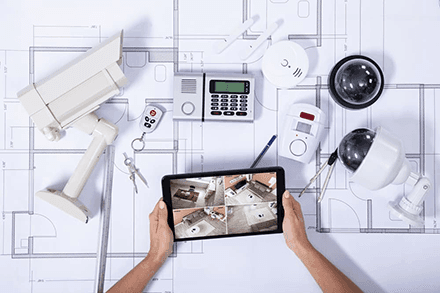
9. Power Source
Cameras come with different power options, and your choice depends on the installation location and your needs:
Wired Cameras: Offer a continuous power supply and stable connection but can be more challenging to install, especially in areas without easy access to power outlets.
Wireless Cameras: Easier to install and more flexible in terms of placement, but they rely on batteries that may need to be replaced or recharged regularly.
Solar-Powered Cameras: Ideal for remote areas where wiring is impractical, solar-powered cameras provide eco-friendly, self-sustaining power, though they depend on sunlight for optimal operation.
10. Privacy Features
Privacy features in security cameras are essential to safeguarding personal and sensitive information in a world where data breaches and unauthorized access are growing concerns. These features protect your privacy while ensuring that your surveillance system operates effectively and responsibly.
Security camera features like password protection, two-factor authentication, and end-to-end encryption help secure your system against such breaches. Look for cameras with these features, which can help secure your video data from hackers.
If you’re concerned about privacy within shared or sensitive spaces, some cameras allow you to set privacy zones, masking areas you don’t want to record, such as a neighbor’s property. Some regions have strict laws regarding surveillance, particularly in shared or public spaces. Privacy features, such as adjustable zones or masking capabilities, help ensure your cameras comply with legal requirements by preventing the monitoring of off-limits areas.
By prioritizing privacy features, you not only protect sensitive data but also maintain trust among family members, employees, and customers. A security system that respects privacy while providing robust protection is key to creating a safe and comfortable environment.
Security Camera Features Conclusion
When planning a security camera installation, it’s important to consider the specific features that meet your particular use case. From video quality and night vision to motion detection and smart home integration, every feature contributes to creating a system tailored to your needs. By assessing the location, potential risks, and daily usage, you can build a security setup that not only enhances safety but also provides the convenience and peace of mind that modern surveillance systems offer.
Need assistance with your security camera project? Contact Pennyrile Technologies today for a free, no-hassle quote.

